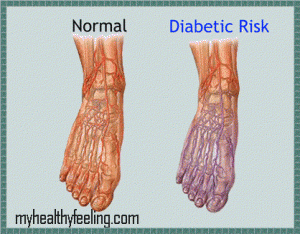The number of people suffering from diabetes steadily grows. Although in most cases it is inherited, one has the chances of developing diabetes due to sedentary lifestyle. Nerve pain is primarily associated and experienced by diabetes sufferers. In fact, diabetic nerve pain or diabetic neuropathy is due to diabetes. It is quite common for people suffering from diabetes for long periods of time and nerve pain develops any time. Types 1 and 2 diabetes has diabetic neuropathy. Besides, diabetic nerve pain should never be ignored as it can affect other organ systems such as the heart and digestive system. Fortunately, the condition could be prevented when treatment is implemented. Here are some important things you should know about diabetic neuropathy.
Diabetic Nerve Pain Types
Diabetic nerve pain is classified into different types mainly because the body consists of different nerve types with different functions. Treatments highly depend on the kind of neuropathy you suffer. Take note that the first three types are polyneuropathy which means that it affects several nerves. The last type meanwhile is mononeuropathy which is the opposite of polyneuropathy.
- Peripheral neuropathy – This is the common diabetic nerve pain that distresses the nerves going to the extremities such as arms, hands, legs and feet. The nerves going to these areas are long that damages to the nerves oftentimes happen. Once these nerves are damaged, it results into foot problems like ulcers, foot deformities, infections and even amputations.
- Diabetic amyotrophy – This type is also called proximal neuropathy and causes muscle weakness. It normally affects the muscles on the upper portion of the hips, buttocks and legs. Oftentimes, it includes nerve pain, shooting pain to be specific, from the lower back going to the leg. This type of diabetic nerve pain greatly affects aged people suffering from diabetes and only resolves once treatment is initiated.
- Autonomic neuropathy – Autonomic nerves are responsible to maintain body function and keep the homeostasis of the body at its normal state. Once they are damaged due to diabetes, problems arise in maintaining the body’s homeostasis. This condition is quite overwhelming considering that it affects many systems of the body- from the digestive tract to your vision. However, symptoms are based on the specific damaged nerves.
- Focal neuropathy – This diabetic nerve pain type only affects one particular nerve. It develops suddenly, and oftentimes, it affects nerves at the head especially the nerves leading to the eyes. Moreover, it also affects the nerves at the legs and torso. Once leg nerves are damaged, focal neuropathy causes leg pain in a specified leg location.
Diabetic Neuropathy symptoms
The symptoms highly depend on the type of nerve damage you are suffering from. Generally, symptoms of diabetic nerve pain start out like occasional pains during the early stage, yet as the damage worsens, the symptoms also grow and become apparent. Thus, never ignore mild symptoms as it strongly indicate nerve damage and take notice of any weakness, numbness, tingling or pain even if they seem minor.
Causes
Causes resulting to diabetic nerve pain are not known but researchers have several clues. However, it was believed that the condition is highly influenced by glucose level in the blood as well as controlling them. Nonetheless, some factors may also result to diabetic neuropathy development, such as age, in which nerve damage and pain are seen mostly among older people who are suffering from diabetes for a long time. Lifestyle is another factor wherein smoking and alcohol are proven to worsen diabetic neuropathy. Lastly, nerve injury, either because of mechanical injury or inflammation, is vulnerable to the development of diabetic neuropathy.
Diabetic Neuropathy Treatment
The finest way to treat diabetic nerve pain is by keeping close monitor of the blood’s glucose level. This effectively delays the sequence of nerve damage. Moreover, it should be incorporated with eating the right kind of foods and making a diet plan that will make it easy for you to control the glucose and maintain the normal hemoglobin A1C range. Aside from eating right, engaging in some form of exercise has been proven to lower the glucose level in the blood, making it easier to control it. As a matter of fact, exercise boosts up insulin sensitivity along with other healthful benefits such as more energy, stronger and leaner muscles, better weight control and cardiac health as well as lowers blood pressure. Of course, you should take medication for your diabetes and regularly monitor your blood glucose level.
Conclusion
Therefore, there is nothing to be worried about diabetic neuropathy as it can be treated and prevented. What is important is that you must never ignore the early signs of nerve damage to prevent it from becoming worse. Also, try to live a healthy lifestyle that involves eating nutritious foods especially those that helps in controlling blood glucose level; exercise, always take your diabetes medication and monitor your glucose level regularly. In this way, you are slowing down the development of diabetic neuropathy and initiate proper treatment with your doctor’s advice.



I truly appreciate this post. I抳e been looking everywhere for this! Thank goodness I found it on Bing. You’ve made my day! Thx again